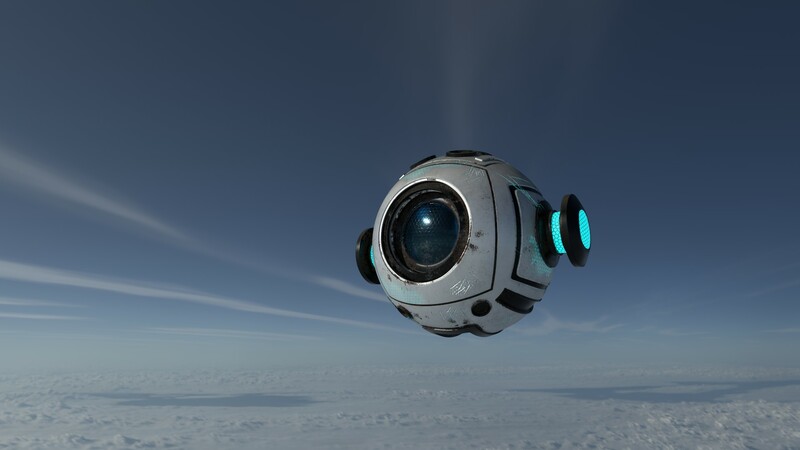Telis Taharin-Zambrano
Icon of Ambition

OUT OF CHARACTER INFORMATION
- Intent: A tactical and mobile medical droid for use by the Sith Empire
- Image Source: X
- Canon Link: Alusteel, Bacta
- Permissions: Kascalion Geidfield
- Primary Source: N/A
- Manufacturer: Sith-Imperial Corps of Engineers
- Affiliation: The Sith Empire
- Model: STS-1 Medical Droid
- Modularity: No
- Production: Minor
- Material: Alusteel Plating, advanced wireless receivers, blast-proof Bacta tanks
- Classification: First Degree
- Weight: Extremely Light
- Height: Very Small
- Movement: Repulsorlift
- Armaments: No weapons
- Misc. Equipment: Wireless command receivers, Bacta-based healing mist, deployable smokescreen
- Resistances (Optional):
- Energy: High
- Kinetic: Low
- Lightsabers: Low
- EMP/ION: High
SPECIAL FEATURES
Utilizing Armorer designed for starships and advanced insulates circuitry they prevent the effects of EMPs and Ion-blasts from interfering in it’s electronics, the STS-1 Medical Droid is prepares for some of the various anti-droid weapons employed on the battlefield meant to stop mechanical support. What it lacks in firepower, size, and ability to deal damage, it makes up for in mobility and medical assistance, often employed in large swarms to provide support for entire legions of Sith troopers.
STRENGTHS
- Swarm-Support: A swarm of STS-1 Medical Droids is able to quickly output large clouds of Bacta mist or smoke screens, rejuvenating and healing weary Sith soldiers to continue fighting, while enabling a far more defensive place to stand their ground against threats.
- Small and Swift: With the minute size and weight of the STS-1 Medical Droids, alongside the advanced AI that interconnects each droid in a swarm, combatants will quickly find that trying to hit a single STS-1 Medical Droid is quite a challenge. Even a trained eye will have issue nailing down a single droid, and if a swarm loses a large number of its bulk, they will re-adapt their strategy to account for the losses.
- Exotic Defenses: A large issue with Droids is how weak most of them are to EMP and Ion weapons, and with the common use of blasters in the battle, many medical droids are unfit for use in active wargrounds. Advanced solutions presented itself through starship armor and isolated electronics, and while the STS-1 Medical Droid is far from invulnerable, it can survive a few shots from a light-caliber.
WEAKNESSES
- Low Reserves: The STS-1 Medical Droid is very small, and while they’re able to spread healing quickly, they do not have a very large supply of Bacta in their tanks. When a swarm has run out of Bacta, it will quickly be forced to return back to a homebase in order to refuel, which can take time that is valuable in a fight.
- Diminutive: Despite their high resistances to certain weaponry, the TS-1 Medical Droid is still small, and requires light plating in order to be fast. The STS-1 Medical Droids aren’t built for durability, and as such a single model isn’t expected to survive a single notable strike, blast, or explosion. Heavy weapons and explosives can quickly take out swarms without too much issue, even with the evasive protocols programmed into the droids.
- Vulnerable to Hacking: An STS-1 Medical Droid swarm is able to work so effectively because of the droids all working in tandem with one another to deliver defensive staying power it Sith troopers. While these droids are uplinked and connected to a private server, if one is able to get into their systems and disable the uplink, a STS-1 Medical Droid swarm will quickly devolve into chaos as each droid attempts to calculate what is the best plan of action, often with fatal results for the swarm.
DESCRIPTION
After the intensity of the recent battle of the Sith Empire over Mandalore, and the high number of casualties due to the brutal approach of both sides, it was agreed upon by Kascalion Geidfield, that the battles that the Sith Empire have been fighting more and more lately are becoming too destructive for normal medical intervention. A new system had to be devised in order to lower the number of casualties the Sith Empire’s legions faced in battle, and for that he turned to his apprentice, Telis Taharin, testing him to figure out a solution to the growing concern of life-cost.
Telis Taharin sought for the solution in old weapons schematics that he had developed, looking for a mechanical and technological approach rather than alchemical. Finding inspiration in an old blueprint that laid out an offensive array of hunter-killer droid swarms, Telis brought up the suggestion to the scientific advancement branch of the Sith Empire, sharing plans for employing swarms of flying, healing droids on the battlefield. The technology necessary to construct this goal was all mostly in place, and a large portion of the advancement of technology came in the form of stronger wireless receivers and communicators, enabling the droids to become smarter together as opposed to on their own.
When the suggestion of armor was brought up there was a mutual agreement to focus on two of the most deadly weapons to droids on the battlefield - laser weapons, and EMP/Ion weaponry. The latter was solved by isolating the electronics in the droids with vacuum-sealing, though the former was a bit of a stopping point until the suggestion came up of using Alusteel, commonly used for spacecrafts, to keep the droids both able to nimbly fly and protected from blaster fire. Without much time afterwards, the STS-1 Medical Droids hit manufacturing, swarms programmed to be ready to use on the battlefield as soon as the first droids came out of the factories.
Last edited:







